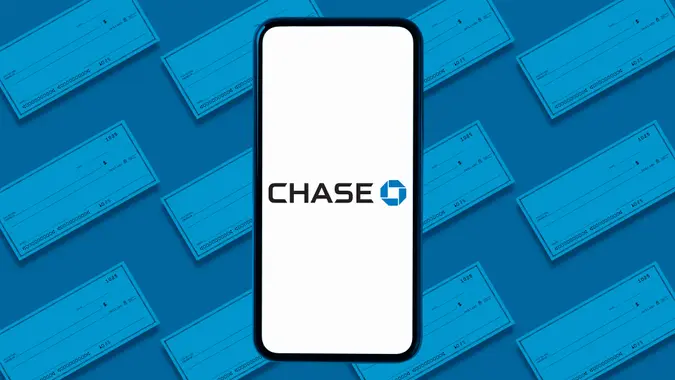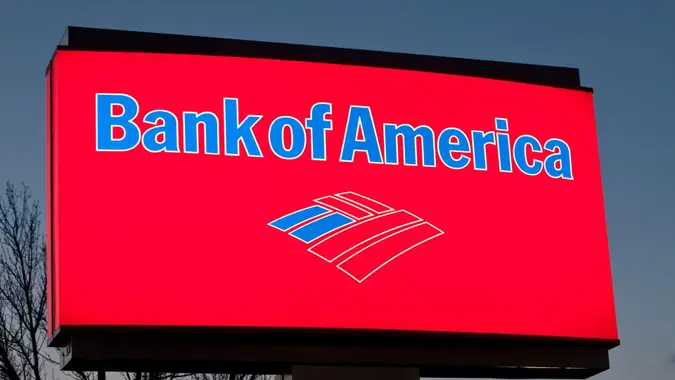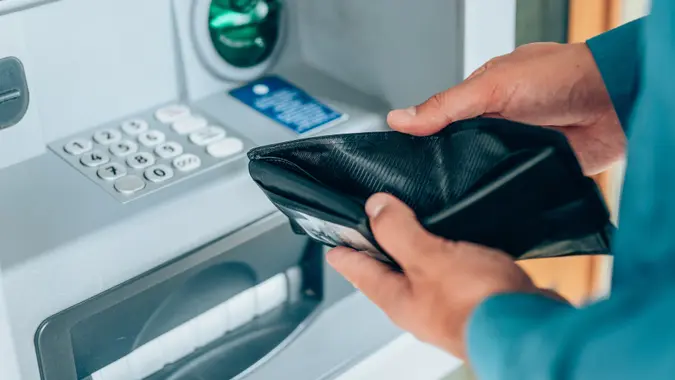ACH Transfers: Everything You Need To Know

Commitment to Our Readers
GOBankingRates' editorial team is committed to bringing you unbiased reviews and information. We use data-driven methodologies to evaluate financial products and services - our reviews and ratings are not influenced by advertisers. You can read more about our editorial guidelines and our products and services review methodology.

20 Years
Helping You Live Richer

Reviewed
by Experts

Trusted by
Millions of Readers
An ACH transfer is an electronic funds transfer between two banks that use the ACH network to process the transaction.
ACH stands for the Automated Clearing House — a network organized by the National Automated Clearing House Association, also known as Nacha.
Learn: How To Guard Your Wealth From a Potential Banking Crisis With Gold
How Does an ACH Transfer Work?
In an ACH transfer, an originator starts a direct transaction by giving the necessary information to a bank, credit union or financial institution. Other things to know:
- The originator can be a person or a corporation.
- Financial institutions send all of their ACH requests in a batch
- When the ACH network receives the ACH payment information, it sends it to the receiving financial institution.
- The whole process can take as little as a few hours to complete, but the type of transaction can affect that.
ACH Transfer Steps
For example, when your employer pays you through direct deposit, here’s how the money moves into your bank account:
- You provide your bank account information to your employer.
- Your employer sends an electronic payment file to its bank.
- Your employer’s bank sends the payment to what is known as an “ACH Operator.”
- The ACH Operator sends your money to your bank
- You receive your money in your checking or savings account, or each account can receive a share of the deposit.
What Is Needed for an ACH Transfer?
Here’s what you need to receive money from an ACH transfer:
- An account to receive the funds, like a checking account, savings account, payroll card or prepaid card
- Account information
The originator may request a voided check or have you complete a form to collect your account information to continue with such transactions as a bill payment.
Types of ACH Transfers
ACH transfers fall into two primary categories: deposits and receipts.
Deposits
- Direct deposit: Used for payroll, expense reimbursement, to pay bills or pension and dividend payments
- Cross-border: Used to send payments to Canada, Mexico, Panama and select European countries
- Trade: Used to pay suppliers through CCD+ and CTX formats
- Taxes: Used to make local, state and federal tax payments
Receipts
- Consumer debit: Used for accepting one-time or recurring payments from consumers
- eCheck: Used to convert paper checks into ACH debits that can be processed electronically
- Corporate collection: Used to collect payments through CCD+ and CTX formats
- Concentration: Used to combine funds into a single account
Fees for ACH processing vary. All financial institutions that send or receive ACH transfers must pay an annual fee plus nominal fees for each transaction. ACH network fees for 2025 were $0.000185 per entry and $366 for the annual fee.
Pros and Cons of ACH Transfers
The ACH network is used for a large portion of fund transfers in the U.S. This includes items such as direct deposit, tax refunds and payment services such as PayPal or Venmo. Here are some benefits and drawbacks of using ACH transfers:
| Pros | Cons |
|---|---|
| Payments are easier to track, can’t get lost and are delivered sooner than if they were sent by mail | It may be easier to overdraw an account when payments are automatically deducted |
| You don’t have to remember to make payments and are less likely to get hit with late fees if you make recurring payments | It’s easy to forget when bills are paid, leading to double payments and continued payment for services you don’t want |
| Your personal information is hidden from someone who might intercept a check | Payments must be received by the transaction cutoff: 10:30 a.m. EST for morning submissions and 2:45 p.m. EST for afternoon submissions |
| The ACH transfer amount limit is $100,000 per day |
Alternatives to an ACH Transfer
The ACH network is not the only method for settling payments electronically. You can opt to use a more traditional wire transfer if you’re interested in getting it there as fast as possible.
Wire Transfer
A wire transfer is a direct transfer of funds from one bank account to another using routing numbers, essentially working like an electronic check.
Wire transfers usually execute faster than ACH transfers. They are also final, while an ACH transfer can be reversed, or pulled back, from your account since they take longer to settle.
However, perhaps the most relevant difference is cost. ACH transfers have very low fees associated with them. Most consumers never see these fees.
Wire transfers can be very costly in comparison. Wells Fargo, for instance, charges $30 for outgoing wire transfers. Bank of America charges $30 for domestic transfers and $45 for international wire transfers.
Payment Apps
Some payment apps, such as PayPal and Venmo, use the ACH network for sending and receiving payments through their platforms. Note that these apps are the closest thing there is to an ACH transfer app.
A more recent choice, Zelle, is a bank-to-bank platform. Unlike PayPal or Venmo, which rely on the ACH network, a Zelle money transfer between banks that are both in the network uses Zelle’s own system. As a result, it is faster than the ACH transfer time.
How Long Does an ACH Transfer Take?
In the last few years, there has been a huge effort to speed up the time it takes for an ACH transfer to clear. What once took a few days can be done in a few hours.
The Federal Reserve and Nacha maintain a processing schedule that runs Sunday to Thursday. If your money is eligible for a same day transfer, there are currently three windows. If the transfer info is sent by 10:30 am ET, the money should be in your account by 1 pm ET. The last window of the day allows you to send your transfer info by 4:45 pm ET. The money should be in your account by 6 pm ET.
In the next few years, Nacha wants to introduce a later processing window that aligns with the end of business hours on the West Coast.
Do ACH Transfers Go Through on Saturdays?
Currently, ACH transfers do not go through on Saturdays. Payments are settled when the Federal Reserve’s National Settlement Service is open. They do not run on weekends or on federal holidays.
If you have an ACH transfer set up for a bill due over the weekend, the payment will be collected on the next banking day.
How to Send Money Using an ACH Transfer
To send money with an ACH transfer, follow these steps:
- Collect the routing number for the recipient of the money
- Login to your bank account
- Input the amount you wish to send and the account details for the person receiving the money.
- Click submit.
Final Take To GO
Whether you’re sending or receiving money, it’s hard to beat the convenience of ACH transfers. It’s faster and more secure than mailed payments and cheaper than wire transfers. It is important to note that there are certain limitations on ACH transfers.
Depending on your financial institution, there are cutoff times for when batch transfers can occur. Check with your bank about its ACH rules and how long you should expect a transfer to take to process.
Joel Anderson contributed to the reporting of this article.
Our in-house research team and on-site financial experts work together to create content that’s accurate, impartial, and up to date. We fact-check every single statistic, quote and fact using trusted primary resources to make sure the information we provide is correct. You can learn more about GOBankingRates’ processes and standards in our editorial policy.
- Nacha. "ACH Payments Fact Sheet."
- The Federal Reserve. "Same Day ACH Resource Center."
- Nacha. "Network Administration Fees"
 Written by
Written by  Edited by
Edited by 























